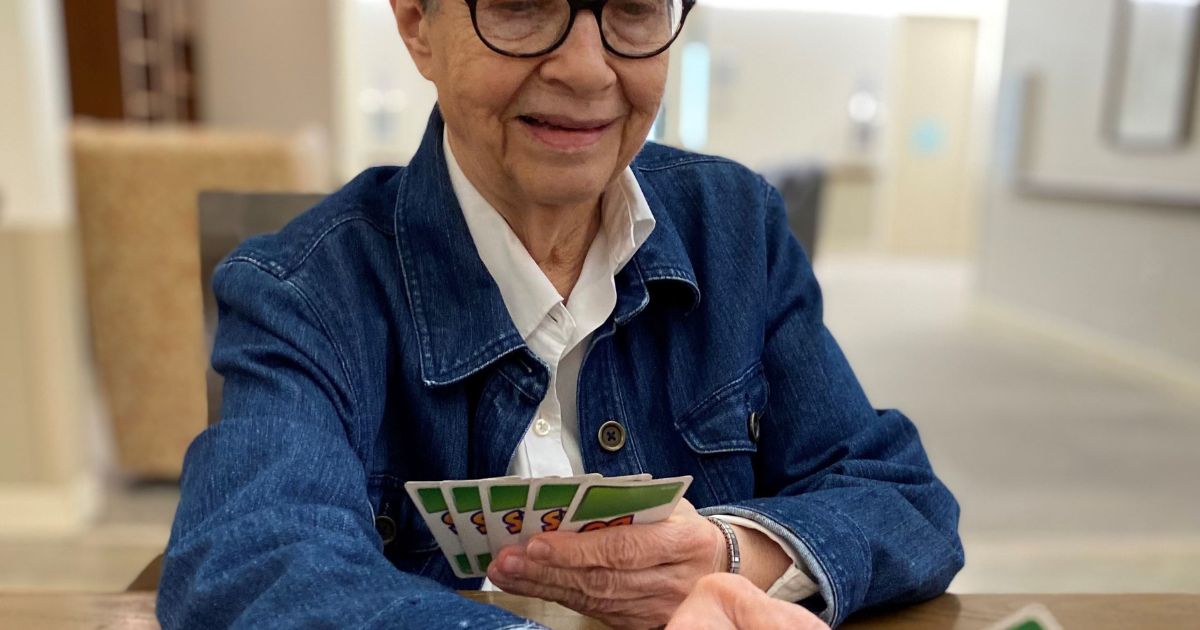As older adults age, safety within the home becomes increasingly important. Seniors often face mobility challenges and are at a higher risk for falls and accidents. To ensure a safe living space, it’s crucial to adapt the home environment to their changing needs.
This blog from Abe’s Garden at Home shares tips on how to maintain a safe home when aging in place, and what to look for when considering home modifications.
5 considerations to maintain a safe environment for seniors
1. Understand the unique needs of older adults
Each senior has unique health conditions and mobility levels. Carve out time to assess your aging loved one’s individual needs and consider factors like vision impairment, balance issues, and muscle strength. Talk to your healthcare provider for guidance.
2. Promote a clutter-free environment
Clutter can not only be an eye-sore, but also a major trip hazard. Clear walkways of cords, loose rugs, and any unnecessary furniture to create a clear and easy-to-navigate path throughout each room.
3. Install adequate lighting
Good lighting is essential for preventing accidents, especially for older adults with declining vision. Make sure that all areas of the home are well-lit, including hallways and staircases. Nightlights in bedrooms, bathrooms, and hallways can help when your loved one needs to move around the home at night.
4. Choose non-slip surfaces
According to the Centers for Disease Control and Prevention (CDC), falls are a leading cause of injury among older adults, so it’s important to install non-slip mats in critical areas such as the bathroom and kitchen. Additionally, you may want to consider upgrading to slip-resistant materials altogether.
5. Consider smart technology
Technology can significantly improve the safety and comfort of a senior’s life at home. Automated systems can control lighting, temperature, and even lock doors.
Technologically advanced medical alert devices that are voice or touch activated can also provide peace of mind for both seniors and their families.
Room-by-room safety checklist for home modifications
Entryway
- Install handrails on both sides of any steps.
- Ensure the doorway is well lit.
- Consider installing a ramp if stairs are too difficult to navigate.
- Lower thresholds or transition between different types of flooring smoothly to prevent tripping.
Living room
- Arrange furniture to create clear pathways.
- Secure carpets to the floor and remove any loose rugs.
- Keep cords away from walkways.
Kitchen
- Store frequently used items within easy reach.
- Use a stool with a safety rail if needed to reach higher shelves.
- Ensure the floor is slip-resistant and clean up spills immediately.
Bathroom
- Install grab bars in the bathtub/shower and near the toilet.
- Reinforce walls in the bathroom for grab bars if they aren’t already sturdy enough.
- Use a bathmat with a non-slip underside.
- Set the hot water heater to a safe temperature.
- Opt for walk-in showers with a zero threshold and a built-in seat.
Bedroom
- Place a lamp or light switch within reach of the bed.
- Replace doorknobs with lever handles for easier operation.
- Keep the path from the bed to the bathroom clear and well lit.
- Consider a bed rail or higher bed if getting in and out of bed is challenging.
Stairways
- Ensure handrails are sturdy and present on both sides.
- Mark the top and bottom steps with bright tape.
- Keep stairs free of clutter.
Ongoing safety assessments and assistance from in-home care team
You can reduce the risk of injury to older adults who are aging in place at home by systematically reviewing each area of the home and making modifications as needed. While some changes may require professional help or a significant investment, many are simple adjustments that can make a big difference.
Remember to balance independence and safety so your loved one can feel comfort and secure in their home. Home care teams like Abe’s Garden at Home can support your home safety efforts through a comprehensive in-home safety evaluation. The personalized process also includes recommendations for modifications that may help your loved one age safely at home longer.
Are you ready to explore in-home care?
Download our free guide, “Compassionate Support from the Comfort of Home: A Guide to Abe’s Garden at Home,” to help you understand the options available to you and your loved one. You’ll learn about our approach, the benefits of in-home care, our service offerings, and how to get started.

